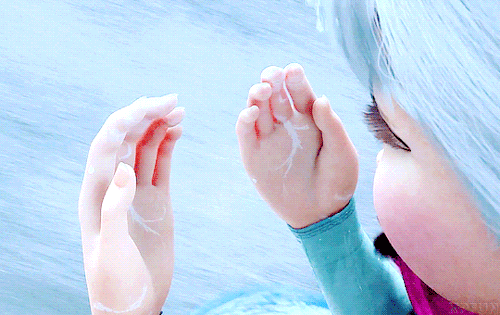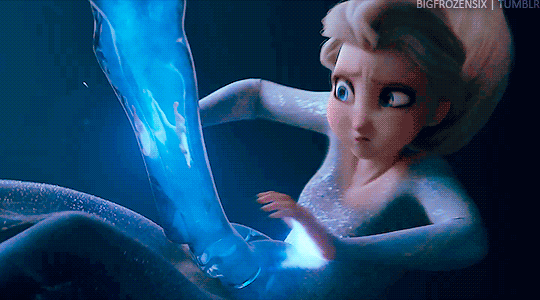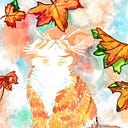Frozen 2, The Sami Culture and Scandinavian Myths
Scandinavian Myths

Northuldra and the Sámi
I just saw Frozen II and I had to write about the connections to the Sámi culture and Finnish, Norwegian and Swedish myths and folklore.
Let´s start with the Sámi culture (also known as Sami, Sapmi and Saami. As a Finnish speaker I´d refer a Sámi person as “saamelainen” or “saami” and the language as “saame”) I have written a lot about Sami mythology in my blog. I have Sámi ancestry from the Lapland of Finland and Sweden.


The Sámi´s are native people of Scandinavia. There are about 20 000 people in this world who speak Sámi languages. These days you can find Sámi´s all over the world (and people with Sámi ancestry) but in general, most Sámi´s live in the Lapland of Sweden, Norway, Finland and Kuala Peninsula in Russia. This is why, for example in Finland, Lapland is sometimes called as “Saamenmaa” the land of the Sámi. Sámi´s were nomads and reindeer herders and still today many Sámi´s are reindeer herders. Already in the first Frozen, there were Sámi influences because Kristoff´s character was inspired by Sámi culture. Kristoff´s outfit is similar to traditional Sámi outfits. Different Sámi tribes and regions have their own outfits and designs. The pointy shoes and outfits made of reindeer skin are common (sorry Sven).

There are several Sámi tribes and Sámi languages. Most common Sámi language is northern Sámi, which is a universal Sámi language that Sámi´s who speak different Sámi languages use to communicate with each other.
Joik
A joik or yoik also named luohti, vuolle, vuelie, or juoiggus in the Sámi languages, is a traditional form of song in Sámi music performed by the Sámi people. Joiks do not have any words. They are pure sound that captivates emotion. There are different types of joiks. Joiks for love, friendship, family, reindeer’s, winter, northern lights..you name it. I was impressed by how many new joiks there was in Frozen I and II and I loved the sound of the shaman drums.
In Frozen II we meet the Northuldra tribe and they are based on Sámi people. One of Northuldra´s mentions that they worship the sun. Sámi´s followed a nature-based belief system and since in Lapland winters are dark and long they did worship the sun as the giver of all life.
You´ll be sad and disappointed to know how much discrimination there is towards the Sámi culture in Finland. There has been some progress recently, especially what it comes to the cultural appropriation being questioned. I was sitting in the movie theatre and some teenage girls were making fun about Northuldra´s/Sámi´s worshipping the sun since they are from Lapland…
This is the Sámi flag. It has a sun in the middle. Sometimes I am genuinely worried about the lack of education of our own history in this country (several Finno-Ugric tribes shared a similar belief system). Sun is also often portrayed in the centre of Sámi shaman drums.

In autumn 2019 Walt Disney Studios made a historical agreement with the Sámi population of Norway, Finland and Sweden so that the Sámi culture in the film was portrayed with respect and they had Sámi experts with the developing the story and the characters. Frozen II is also translated into Northern Sámi (Jikŋon II).

Ahto-Hallan, In depths
The way Ahto-Hallan was described in Frozen reminded me of Finnish and Sámi myths about the land of the dead. I don´t know if that was the intention of the filmmakers but hear me out;
Ahto-Hallan is in the far north, a place where the spirits live, home of magic and that is where Elsa finds the spirits of the people who lived before her.


Ahto/Ahti is the name of the sea god/spirit of the sea and god of the depths in Finnish mythology (Ahtola is the place where all the merfolk lives). Ahto-halla is Finnish. It refers to “ahtojää” packed ice. Halla is also Finnish, it means frost/frozen.
In Finnish mythology, there is a place called Pohjola (combined from the words pohjoinen- north and pohja- bottom). Pohjola is the underworld, place where the spirits of the dead life. Pohjola was located in the far north in the land of eternal winter. In this old world view, the world was made of three layers. Upper layer (ylinen) was the place where the highest spirits resided, the middle world was the world of the animals and humans, underworld the bottom, was the land of the dead. These places were not really seen so much as physical places but different layers of human conscience.
Sámi myths have lots of elements from Scandinavian and Finnish mythology and vice versa. In some Sámi myths, the land of the dead is called “Rotaimo” and it can be found from the bottom of a bottomless lake. In Lapland, there are lots of lakes that are very deep and have fake bottoms (goes back to Ahto being the spirit of depths).

Waterhorse
In Frozen II Elsa tames a beautiful water horse called The Nokk. The water horse is a common character in Scandinavian folklore equivalent to Scottish Kelpie. In Swedish folklore, it is known as bäckahäst/näcken and in Norway as nøkken.
In the folklore, the water horse was usually a large, white and a beautiful horse. It would walk in the shore and lure people to climb on it´s back and then it would drown them. It was possible to tame the majestic horse with tricks but I guess Elsa and the Nokk have a natural connection since they both have ice magic.


Which brings us to the Finnish water horse myth. What it comes to Finnish mythology there is one horse above all others and he is Iku-Tihku. Iku comes from the word ikuinen meaning eternal and tihku means dripping water.

A freaking eternal ice horse that drips water! I rest my case!
Here is the story of Iku-Tihku. Iku-Tihku was made inside a mountain by trolls. He was made of fire and ice and he was the first horse ever created. Because he was partly made of ice he could not visit the human world during the summer and the warm months because he would melt. He could, however, visit the human world during the wintertime and because Iku was partly made of ice, he had the ability to travel between the human world and Pohjola, the north/the underworld and deliver messages from humans to the spirit world.
Not too different from the way Nokk takes Elsa to Ahto-hallan.
I am starting to see why so many non-Finnish speakers consider the Finnish language as some sort form of elvish.

Stone Giants
Trolls saw that Iku-Tihku was a mighty creature so they used him as a model to create the first horses, but they were not made from ice and fire but from iron, and they could travel between all the worlds and seasons.
Trolls are not very common in Finnish folklore but you can find LOT´S of trolls from Swedish, Norse and Sámi myths. They often live in the mountains and are connected to stones and minerals and they are more than often giants.
Here are some sleeping stone giants from Frozen II

Here is a picture from my family´s summer cabin from northern Finland. Do you see what I see?

Iduna
Mother of Elsa and Anna is Iduna and in Frozen II we find out that she was a Northuldra. In Norse mythology, Iduna is the name of the goddess of health and rejuvenation. Her symbol is the apple and she is connected to the autumn season (have you seen the colour palette in Frozen II?). I have heard quite a few Americans complaining that Iduna doesn´t look native. (I must say I have a hard time understanding the obsession some Americans have with race).
What does a native look like?
I think the most straightforward explanation is the fact that when the first Frozen movie was made, makers were not planning to do a sequel and didn´t think of Iduna´s backstory then.

But even if they did, despite the fact that Scandinavian countries and Sámi´s have a sad and violent history, there have been many mixed marriages between Sámi´s Finns/Swedes/and Norwegians and you can come across all kinds of looking Sámi´s. There is variety in hair colour, skin colour and eye colour. The way people look can also vary in different areas. Lapland is a wide place, my friends. Our genetic makeup is always a mixture.

Seita
Last but not least THE SEITA.
Seita´s are stone formations and ancient worshipping places. The Sámi´s went to the seita to leave gifts for the gods, make requests and meditate. Stone formations are common all over the world (Stone Henge probably being the most well-known one).
Why stones?
They are ancient, and the higher they are, the closer they are to the sky and the spirits.
Check out my video about Sami culture.
If you enjoy reading my content, consider subscribing to my feed. Also, if you are not a Medium member and you would like to gain unlimited access to the platform, consider using my referral link right here to sign up. It’s $5 a month and you get unlimited access to my articles and many others like mine. Thanks.
